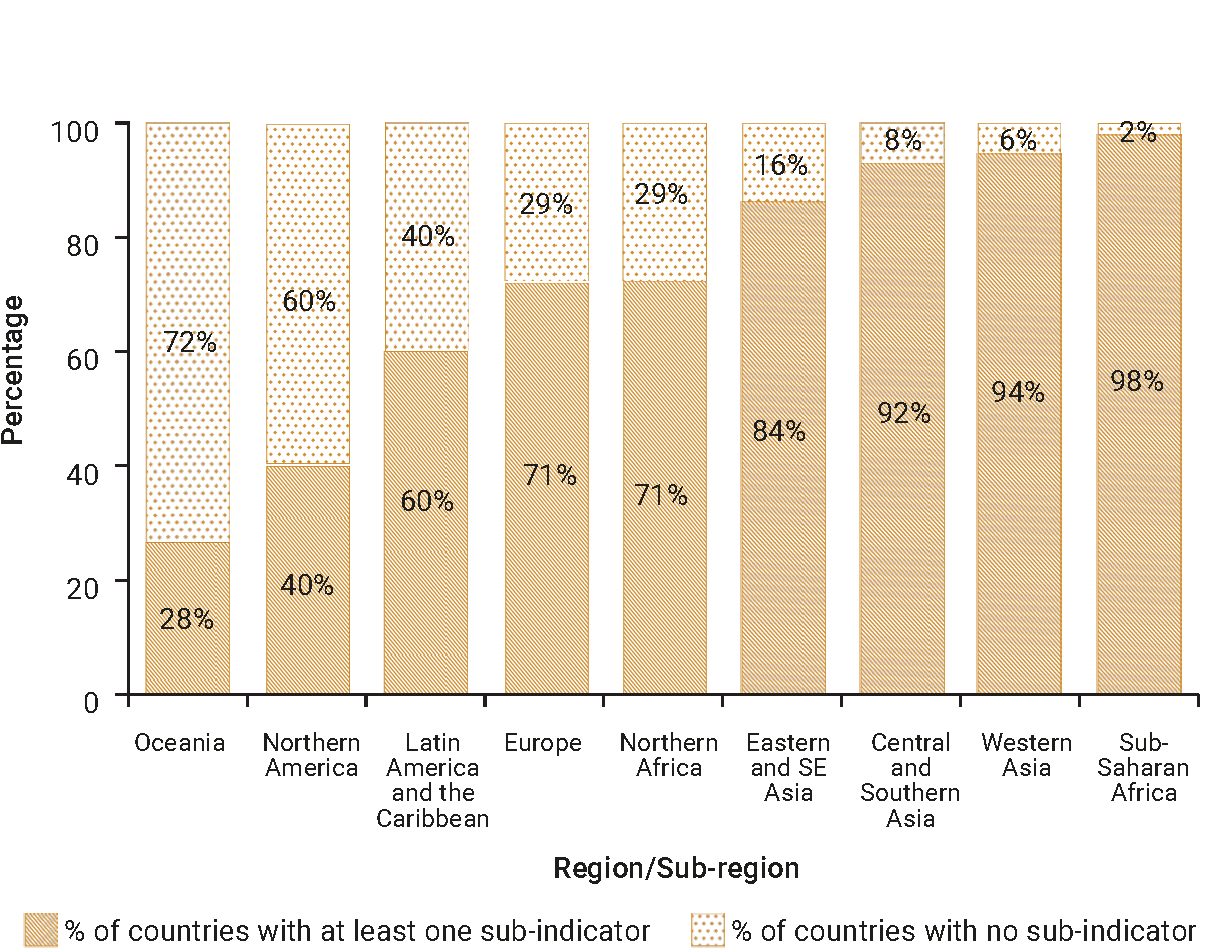SDG Indicator 11.3.1: Ratio of land consumption rate to population growth rate
1. Key features and metadata
Definition: This indicator measures the ratio of total land consumption to population growth rate.
| Sub-indicator | Disaggregated by |
|---|---|
|
EN_LND_CNSPOP Ratio of land consumption rate to population growth rate |
Cities |
Sources of information: National governments (National Statistical Offices) have the primary responsibility of reporting on this indicator to UN-Habitat. UN-Habitat and other partners – such as the Global Human Settlement Layer (GHSL) team, the German Aerospace Center (DLR), partners in the Group on Earth Observations (GEO) and ESRI among others – support various components of the calculation of this indicator.
Related SDG Indicators: 11.2.1 (Proportion of population that has convenient access to public transport), 11.7.1 (Average share of the built-up area of cities that is open space for public use for all), 11.a.1 (Proportion of population living in cities that implement urban and regional development plans integrating population projections and resource needs), 15.1.2 (Proportion of important sites for terrestrial and freshwater biodiversity that are covered by protected area), and 11.b.1(Proportion of local governments that adopt and implement local disaster risk reduction strategies in line with the Sendai Framework for Disaster Risk Reduction 2015-2030).
2. Data availability by region, SDG Global Database, as of 02 July 2025

3. Proposed disaggregation, links to policymaking and its impact
| Proposed disaggregation | Link to policymaking | Impact |
|---|---|---|
|
Ratio of land consumption rate to population growth rate, by type of land use consumed (System of Environmental Economic Accounting [SEEA] 2016):
Applies to:
|
This disaggregation highlights the conversion of non-urban land into urban land, by category of land use(SEEA 2016). It is useful information for decision-makers in assessing the changing shares of different land uses and to monitor the impact of the expansion of human settlements compared to other land uses. The objective is to maximize the benefits of urban growth while minimizing the related challenges. For example, the adverse impact of the consumption of high-quality agricultural lands by urbanization and its impact on the environment. This disaggregation is consistent with The New Urban Agenda (UN 2016b). |
The disaggregation provides essential information for promoting sustainable urbanization patterns based on the provision of goods and services to residents in an inclusive manner and at affordable costs, offering economic and employment opportunities, and allowing coexistence with other local non-urban activities. For example, agriculture and areas devoted to food production, protected areas for environmental or risk prevention purposes (UN 2023e). In particular, the uncontrolled expansion of urban areas can generate potential adverse impacts in terms of risk occurrence. For example, slum expansion, urbanization in flood or landslide-prone areas and human settlements in coastal areas affected by sea level rise. It also has consequences for other categories of activities or uses. For example, the consumption of fertile agricultural lands, deforestation and ecosystem destruction, disruption of the water cycle and landscape modification (UN 2018b; UN 2023e). |
|
Ratio of land consumption rate to population growth rate, by type of growth(UN-Habitat 2018b):
Applies to:
|
This disaggregation is relevant for categorizing the different patterns of urban expansion and for identifying their underlining causes. It can also help in planning urban sustainability more holistically and defining appropriate policy responses for addressing and counteracting observed adverse impacts. This disaggregation is consistent with The New Urban Agenda (UN 2016b). |
Urban sprawl should be inverted to promote a more integrated management of space, population needs and urban services. This should include lower footprint, lower infrastructure costs and higher land use efficiency. For example, infill development on abandoned ‘brownfield’ sites. Compact city development should be aimed at implementing more inclusive and cost-effective interventions for addressing poverty and inequalities; facilitating access (both physically and economically) to health, education, nutrition, water usages, energy, transport facilities, production activities and employment opportunities, and green spaces; and effectively mitigating climate change, other environmental issues and the social costs associated with urbanization (e.g. security) (UN-Habitat 2022). |

